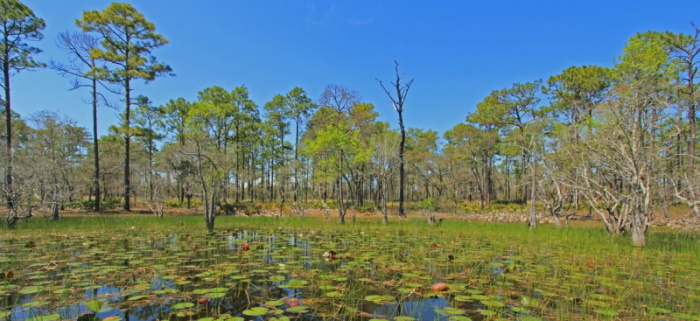Environs
Biological Diversity
The panhandle of Florida is renowned as a biodiversity hotspot, and, fortunately, large tracts of it are conserved by private and public landholders. The hotspot is centered just west of Tallahassee on the Apalachicola River where can be found bluffs intersected by steephead ravines, floodplain swamps, mesic flatwoods, and wet prairies. With its pitcher plants, sundews, and bladderworts, this area harbors the greatest diversity of carnivorous plant species in the world. It also has the only population of the federally endangered red-cockaded woodpecker that has qualified as “recovered”. The upland area around Tallahassee was originally mostly a vast longleaf pine/wiregrass ecosystem, interspersed at lower elevations with hardwood forest and swamps, as described in the writings of early explorers such as William Bartram. Much of this vegetation persists today in the Apalachicola National Forest to the south and west of Tallahassee and on the large private hunting and conservation plantations of the Red Hills Region to the north.

Along the coast immediately south of Tallahassee, the St. Marks National Wildlife Refuge’s marshes and impoundments provide habitat for an abundance of wildlife including alligators, river otters, migratory shorebirds, and waterfowl. Its terrestrial habitats have abundant wildlife too, including black bears, bobcats, and white-tailed deer. The Big Bend coast of Florida stretches from Apalachee Bay just south of Tallahassee east to Cedar Key, in the quiet northeast corner of the Gulf of Mexico. Its coastal uplands grade into marshes and vast sea grass beds that support a multitude of invertebrate species and are nursery areas for finfish and shellfish. These habitats plus bivalve reefs and hard bottom communities can all be found within a half-hour to two-hour drive from Tallahassee.


